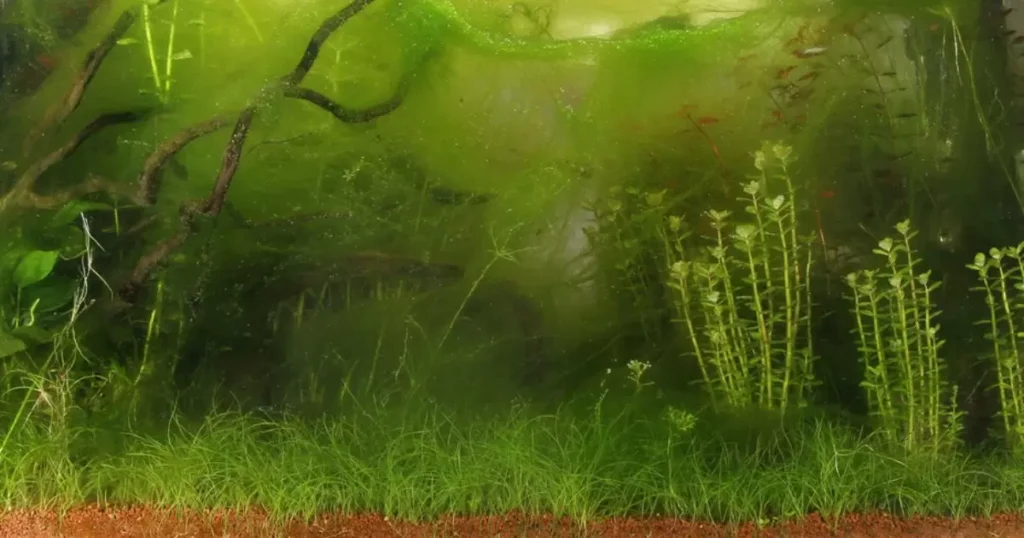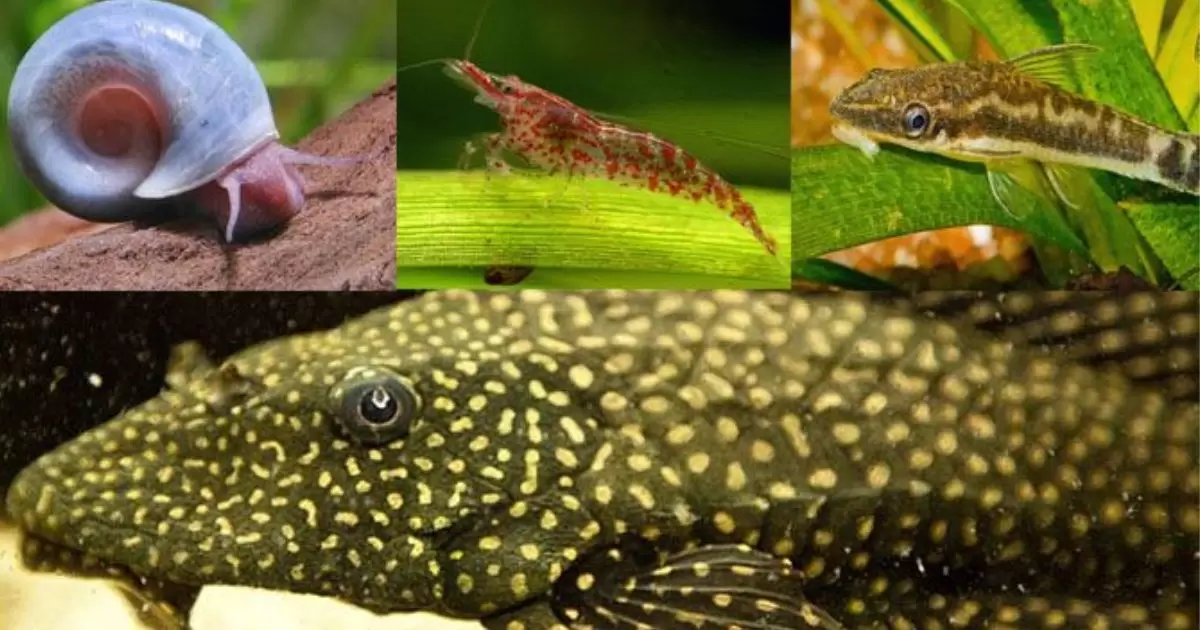Algae eating fish play an important role in freshwater aquariums by helping to control undesirable algae growth. Certain fish species have evolved to use algae as their main food source.
Some have teeth or shells specially adapted for scraping algae off surfaces, while others graze on algal mats or filter microscopic algae particles from the water. Keeping the right types and numbers of algae eating fish can significantly reduce manual algae cleaning requirements.
Common algae eaters in home aquariums include the Siamese algae eater, bristlenose pleco, amano shrimp, and nerite snails. When provided with sufficient algae to eat as well as a balanced diet, these specialized fish form a symbiotic relationship with the aquarium by consuming unsightly algae while also producing waste that helps fuel plant growth through the nitrogen cycle.
Why is my fish tank growing algae?

Before looking at the best ways to remove algae and effective algae-eating fish, it’s important to understand what causes algae growth in aquariums. Algae thrive when there are imbalances like high levels of phosphates, organic waste and nitrates, especially combined with excess light. Being a protist that reproduces asexually, algae can grow out of control very rapidly.
However, there are techniques to minimize algae growth. A well-managed amount of algae may provide some benefits to the tank. Maintaining balanced water parameters and limiting light exposure are keys to preventing large algae blooms. Once formed, algae-eating fish or manual removal methods can be used to curb further expansion.
Read More: ”Betta Fish Tank Mates”
Is algae good for a fish tank?
Small amounts of algae can benefit the tank if kept under control. In moderation, algae add a natural aesthetic to the aquarium, mimicking ponds and lakes in the wild. Fish and invertebrates may graze on algae as well, receiving carotene to produce vitamin A for shine and color. Certain algae varieties like brown and green hair algae assist the nitrogen cycle by reducing nitrates and toxins, contributing to water quality.
It’s only when algae growth spirals out of control that issues arise. Proper light exposure and maintaining water parameters can encourage a balanced algal presence. Overall, well-managed low levels of algae may enhance the aquarium environment and the nutrition of inhabitants.
Types of Algae Eating Fish

Siamese Algae Eater
One of the most commonly kept algae eaters. They efficiently graze on algae growing on glass, rocks, plants, and decorations. They are peaceful as long as kept in groups of 6 or more. Fully grown size is around 3 inches.
Bristlenose Pleco
An excellent option for small to medium tanks as they stay under 5 inches as adults. They are great at controlling brown/black algae and also accept vegetables. Varieties come in unique colors and patterns.
Nerite Snails
These small snails come in various colors and patterns. They do an excellent job cleaning hard surfaces and won’t overpopulate your tank like other snails as females don’t breed in freshwater. Prefers alkaline water parameters.
Amano Shrimp
Peaceful filter feeders that eat microscopic algae and food particles in the water. They reach around 2 inches long. Rarely reproduce in freshwater so won’t overstock your tank.
Otocinclus Catfish
Known to be one of the best algae eaters. They graze algae all day and remain small, under 2 inches. Need a source of natural aufwuchs algae or require additional vegetable supplements.
Chinese Algae Eater
Not truly an algae eater long term. As it matures it becomes more aggressive and may nip at other fish. Often outgrows home aquariums. Best avoided due to poor behavior.
Flagfish
Surface grazers that keep the water surface clear of algae. They need tankmates that won’t be larger than their mouths. A bubbler is recommended to reduce their stress.
Benefits of Algae Eater Fish in a Fish Tank
- Natural algae control – They help keep algae in check by grazing on it regularly without the need for manual removal.
- Reduce maintenance – Having the right algae eaters means less scraping and cleaning is needed to control algae growth.
- Symbiotic relationship – As they eat algae, it removes an eyesore while providing a food source. Their waste also contributes to the tank’s nitrogen cycle.
- Variety of algae removal – Different types target various surfaces like glass, rocks, and plants, or consume microscopic particles to keep the tank clean.
- Multi-purpose fish – Most algae eaters serve the purpose of algae control while being an attractive centerpiece fish for the aquarium.
- Balance the ecosystem – Algae is consumed while fish waste feeds plant growth, promoting a stable environment without excessive algae blooms.
- Natural appearance – Maintaining some algae through grazing fish resembles a more natural aquatic setting compared to an artificially algae-free tank.
- Additional benefits – Many species like plecos and shrimp perform added roles like keeping decorations clean or breaking up pieces of food for other fish.
- Low bioload – Compared to larger tankmates, the most efficient algae eating nano species only add a small biological load to the system.
Care requirements for algae eaters
- Minimum 20-30 gallons for most, 15+ for dwarfs.
- pH 6.5-7.5, regular water changes.
- Algae plus prepared food like flakes or algae wafers.
- Many aggressive, houses singly or in their own species.
- Light cycle and feeding to encourage algae growth.
- Adequate bio and mechanical filtration.
- 72-82°F depending on tropical or temperate.
- help control algae naturally.
- Driftwood, rocks, and plants for cover. Some shy.
- Gentle netting or pouring can nip delicate fins.
FAQ’s
What is the minimum tank size required for most algae eating fish?
A 20-30-gallon tank is usually the minimum requirement for most algae eating fish. Dwarf varieties can be kept in 15 gallons or more.
What type of food should algae eaters be given in addition to algae?
In addition to consuming algae, these fish need a balanced diet that includes prepared foods like flakes, pellets or algae wafers to ensure proper nutrition.
Why are live aquatic plants recommended for algae eating fish tanks?
Live plants help naturally control algae growth while providing habitat and areas to browse. They create a more sustainable environment for both the fish and algae.
What water parameters should an algae eater tank maintain?
Proper water parameters like a pH between 6.5-7.5 and stable chemistry through regular partial water changes replicate the natural environment these fish need to thrive.
Conclusion
Algae eating fish play an important role in planted aquariums by helping to naturally control algae growth. However, their care requirements must be met to keep these clean-up crews happy and healthy. The ideal tank size depends on species, but generally, 20-30 gallons provides enough space. Water parameters should remain stable through weekly water changes to mimic their natural habitat. In addition to consuming algae, these fish need a balanced diet of prepared foods.
Tank mates must be chosen carefully as many algae eaters can be territorial. Live aquatic plants are a necessity to give algae a chance to grow while providing habitat. Adequate equipment like filters and lighting contribute to a thriving system. With the right conditions, algae eaters do an excellent job of cleaning glass and rocks. Their role in the nitrogen cycle makes them valuable members of a sustainably balanced ornamental ecosystem.
With three years of dedicated expertise in the niche of fish, my domain knowledge encompasses breeding, habitat maintenance, health management, and sustainable aquaculture practices, ensuring optimal outcomes in the aquatic realm.











